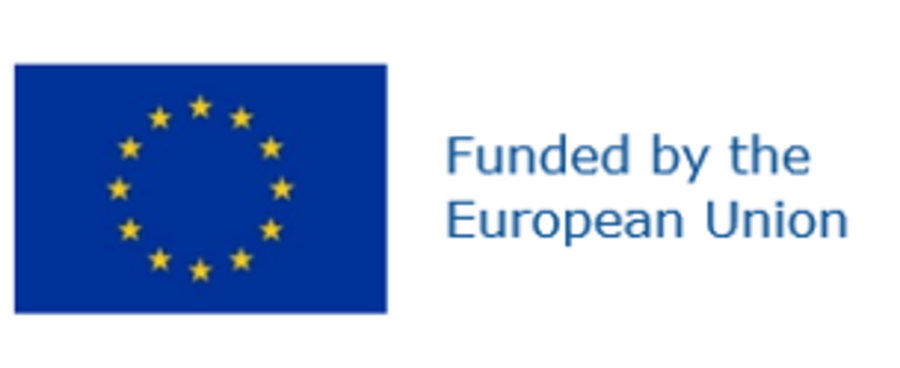Wir verwenden Cookies, um Ihnen die optimale Nutzung unserer Webseite zu ermöglichen. Es werden für den Betrieb der Seite nur notwendige Cookies gesetzt. Details in unserer Datenschutzerklärung.

Hier beginnt der Hauptinhalt dieser Seite
Imports play an important role for Germany’s agricultural sector. Not only as a competitor to domestic agricultural production, but also as an intermediate good for the various agricultural production processes as well as to meet the demand for agricultural goods for which there is no domestic production. This project is designed to show how with existing statistical data and additional scientific data the role of imports on farmers’ income can be estimated. The European Court of Auditors rose the question about the role of imports in the context of the Economic Accounts of Agriculture (EAA) in the Special Report from January 2016 as one of several questions requiring more detailed consideration. To explore this research field in greater depth, this project was divided into four parts (also shown in Figure 1):
Part 1: Description of imports and their usage in German agriculture. This allows to identify goods which are imported for supply with impacts on farmers’ income and others without impacting agricultural incomes. The usage of goods with impacts has to be defined for the next step. Which imported goods in the scope of the EAA are of single or multi-purpose for intermediate consumption in agriculture? Which quantities and values do these goods have? For this purpose, the definitions for the categories "competitive, neutral, intermediate" were created. In the next step, goods in foreign trade were assigned to the CRONOS codes at the level of the eight-digit HS codes. The classification was broken down into products with a use at the level of agriculture and goods with a use in the rest of the economy or trade. Only goods with direct comparability at agricultural level (for example cereals) or for use as inputs are included in the further investigation. Other products imported directly from the manufacturing industry remain outside the consideration. Likewise, goods for trade in food goods are excluded. The result is a list of goods that is comparable to the goods in the CRONOS list. The list was then supplemented by foreign trade data on volumes and values.
Part 2: The impact of goods of the category ‘competing’ on the domestic price level is examined. For this purpose, the available data from foreign trade and domestic producer prices are first compared. The aim of the analysis is to describe the effect or the relationship of imports on the level of producer prices in a given year. For this purpose, unit values were calculated in the EAA and in foreign trade. The Pearson coefficient was used to determine whether the same behavior of producer prices and import and export prices can be observed.
Part 3: Search for information and data to estimate the impact of imported intermediate goods on agricultural production value. Modelling calculation methods for further use. Specifically, the focus was thereby on the four areas ‘Live Animal Imports’, ‘Feed Imports’, ‘Fertilizer Imports’ and ‘Seed Imports’.
Part 4: Examination of the transferability of the calculation models to other EU member states (including Switzerland). Integration of the various approaches into an overall model. To answer the last part, a survey was sent to the EAA Working Group asking about the availability of data for assessing the role of imports. The final step in integrating the various calculation models is currently in progress.
The assignment of HS codes to the CRONOS codes is possible for most products. But HS code does not merge with CRONOS-code for all items. These products are raw products such as grain, vegetables, fruit or live animals. As soon as an imported product already includes processing steps, the product cannot be included in the consideration.
The distinction between ‘competitive, neutral or intermediate’ is not possible for all products. There are clear classifications for agricultural seeds intended for sowing or for breeding and farmed animals. Products with the characteristic ‘neutral’ are not produced in Germany or only in very small quantities. These goods can also be clearly assigned to their category. In the category of competitive goods, however, there are overlaps between ‘competitive’ and ‘intermediate’. As an example, cereal grains compete with domestically produced cereals in the field of food. At the same time, they can be used as an input for feeding the animals. The HS codes do not distinguish between quality characteristics or various uses. A separation of the import quantities into the directions of use requires a much more far-reaching approach.
With regard to the price analyses, it should first be noted that only unit values are comparable. Pearson coefficient shows in some cases dependencies between domestic and international prices. They show strong price correlations between world market and producer prices for bulk commodities such as cereals and oilseeds. However, for products traded in smaller quantities (such as quality wine, tropical fruits) there is low or no correlation.
When importing live animals, a distinction is made between breeding animals and farmed animals. The import of farm animals takes effect directly in production. Imported piglets are fattened and sold as slaughter animals. The difference in weight between piglets and pigs for slaughter corresponds to the import-dependent part of production. This method can be used to determine the proportion of import-dependent production in pigs for slaughter. In breeding animals, the reproduction rate over the branch generations is important in the calculation. A breeding sow gives birth to piglets in production. These piglets can be slaughtered as fattening pigs. Overall, the import share accounted for around 20 % of the total production value of pigs in the EAA. The poultry sector – however - is highly specialized. Few companies breed parent animals and give the parent animals to specialized farms for reproduction. These produce chicks for laying hens or fattening animals. These chicks are passed on to egg producers or fattening farms. Germany's foreign trade data show a break in the time series. Therefore, it is not possible to analyze the proportions of imported chicks in egg production and broiler production over a time series. In order to estimate the import-dependent share of production, it is necessary to determine the shares of parent chicks, laying hen chicks and fattening chicks in the total number of imported chicks. This requires further data from the industry, which are not available as statistics. Overall, strong multiplier effects and incomplete foreign-trade data make accurate estimation difficult. Re-export of parent animals and hatching eggs are not fully captured. It can be concluded that the model produces robust results for pigs but only indicative results for poultry, due to the complex biological multiplication chain and data limitations.
In terms of feed material imports, Germany is net exporter of compound feed, but remains a net importer of protein feed. Own estimations show that Germany is a net exporter of feed grains in most years when net exports via compound feed are taken into account (separate foreign trade data is not available for feed grains, hence estimation needed). Calculations further show that more than 50 percent of total protein feed consumption (with regard to concentrated feed) relies on net imports. The share of gross imports in feed grain consumption varies in most years between 20 - 25 %, for protein feed consumption this share ranges from 80 - 105 %. When translated into the EAA, the share of animal-production value attributable to imported feed inputs (with regard to concentrated feed) has steadily increased from 2012 to 2024 in terms of gross imports and slightly in terms of net imports.
With respect to fertilizer imports, Germany is a net exporter of potassium and produces most nitrogen fertilizers domestically, yet import dependencies rose after 2022 due to market disruptions. Calculations were made at the nutrient level (N, P, K). The share of imported nutrients in total consumption was derived as an indicator of import dependency. Lime (CA) was excluded as domestic only. He noted strong variability in fertilizer trade since 2022, complicating time-series analysis.
In terms of seed for sowing, imports increased markedly between 2005 and 2023, slightly declining in 2023/24. The nine crops accounting for around 75 % of net imports by quantity are considered in the analysis. For seeds of red fescue and clover, net imports were larger than the calculated seed requirement which may be attributable to non-agricultural uses. For the other seven crops, an average net import share of 36 % was calculated. Import-dependent production value is especially high for single-cross hybrid maize and perennial ryegrass, together exceeding € 1.9 billion (preliminary values). It is important to mention as a limitation that the calculations do not distinguish between the various stages of propagation. Such a distinction is not made in German foreign trade statistics.
Regarding the availability of data in other member states, a questionnaire on data availability in fertilizer, feed, and livestock variables was sent to 27 Member States. First results show that foreign-trade data are availability in all MS, but agricultural variables are often missing. An EU-wide list of comparable variables and the development of support tools for estimation and expert assessment to enable the transfer of the models.
Overall, it can be concluded that import dependencies differ strongly by product group: high for protein feed and seed material, moderate for fertilizers and low for most animal and plant products with strong domestic production. The methodological approaches that were applied, offer a replicable framework to integrate trade statistics into EAA analyses. Further efforts are needed to close data gaps in feed and seed statistics, to harmonize CN-EAA code concordances across member states.
A summary of the project results can be found in the following PowerPoint presentation:

Views and opinions expressed are however those of the author(s) only and do not necessarily reflect those of the European Union. Neither the European Union nor the granting authority can be held responsible for them.

Bundesanstalt für Landwirtschaft und Ernährung (Unit 624): Stefan Stegemann, Uwe Platz, Dr. Dietmar Weiß, Yu Ota, Violeta Czapla

Thünen Institut: Prof. Dr. Martin Banse, PhD Inna Geibel, Anton Graf Grote